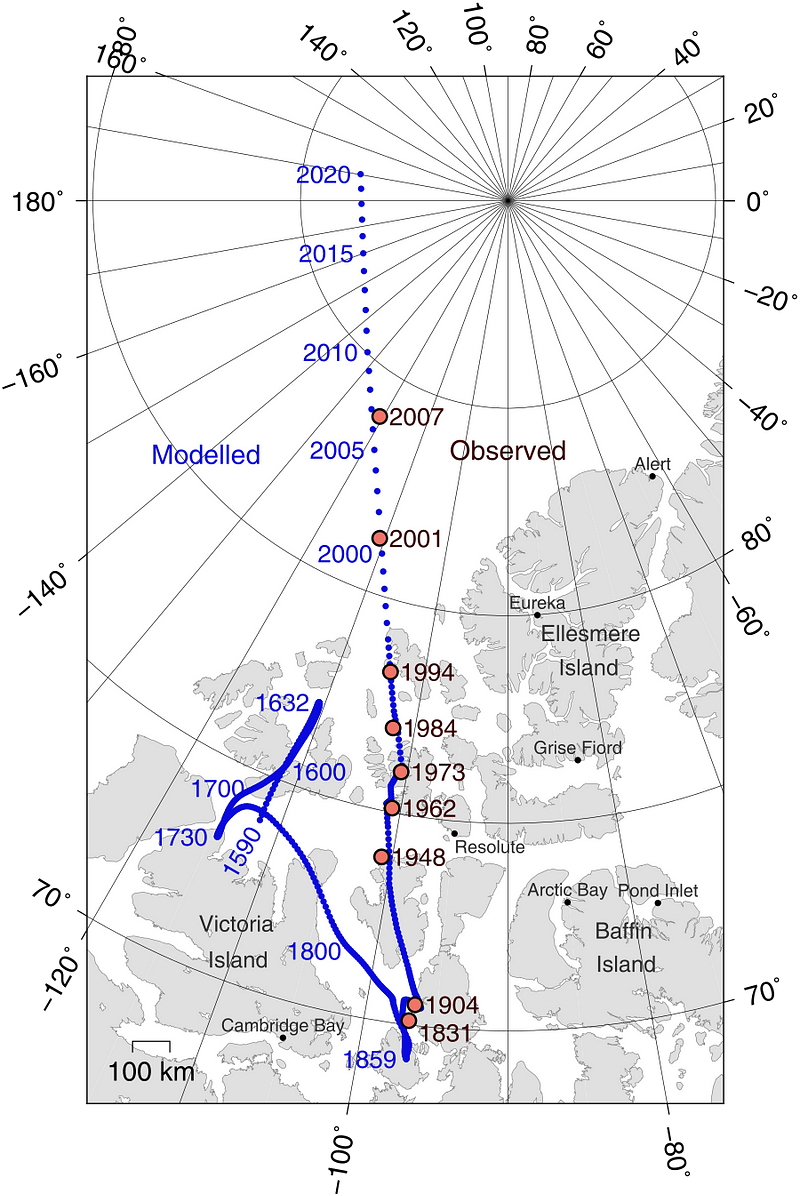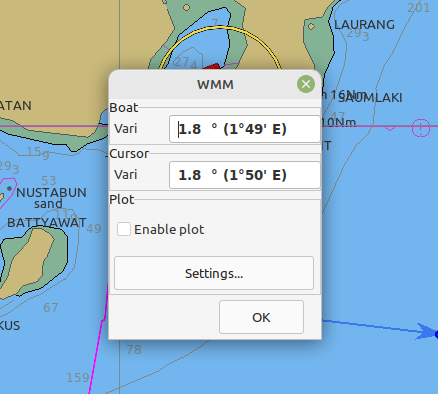Exploring Earth's Magnetic North: A Sailor's Perspective
Written on
Chapter 1: Understanding Magnetic Variation
As a rare phenomenon unfolds, particularly in the United Kingdom, the relationship between the Earth’s magnetic and true poles becomes increasingly significant.

In my daily sailing log, there’s a line that reads: Compass Variation. Currently, while I write this in Indonesia, the magnetic variation is 2° East. Just last year in New Zealand, it stood at 18° East. This discrepancy highlights the difference between True North, where Polaris is located in the northern hemisphere, and where my compass points—Magnetic North.
The gap between True North and Magnetic North shifts over time as the Magnetic North Pole drifts through the Arctic, and this variance can also change rapidly depending on one's location on Earth, especially when flying.

My electronic navigation system uses data from the World Magnetic Model to provide the exact local magnetic variation for today.

What’s happening now?
The shifting of the magnetic north pole is predicted to bring the difference between True North and Magnetic North to zero in the UK for the first time ever. According to the British Ordnance Survey:
“The alignment will reach Langton Matravers, Dorset this month [October 2022] and proceed to Poole by Christmas [2022]. By August 2024, it’ll move through Hebden Bridge and exit the English coastline at Berwick-Upon-Tweed in August 2025. In 2026, it will land again at Drums in Scotland around May before its final stop in Fraserburgh in July.”
These forecasts may shift slightly as new observations are integrated into the model. This new information will encapsulate the latest signals from the Earth's geodynamo, which is responsible for sustaining the magnetic field through the dynamic interactions of molten iron-rich materials in the outer core.
The primary energy source for these fluid motions arises from convection—warmer fluids rising and cooler fluids sinking as the Earth gradually cools. The planet's rotation further sustains the geodynamo.
And that will likely remain stable for several centuries. However, due to the unpredictable nature of the magnetic field over long timescales, it's impossible to determine when this alignment will occur again.
For clarity, the "third north" refers to 'grid north' as depicted on Ordnance Survey maps.
Chapter 2: The Relevance of Magnetic Variation
In today's world of GPS navigation, magnetic variation may seem trivial to many sailors. However, as the owner of a steel boat, I encounter additional magnetic influences (deviation) on my compass, which, combined with the magnetic variation, results in a figure known as Compass Error. The calculations can be quite complex, as deviation is affected by the vessel's roll, pitch, and yaw. For a deeper understanding, I recommend checking out deadreckonings.com.
For novice sailors, navigating these complexities can be intimidating, especially when the variation and deviation are in opposite directions. Fortunately, on smaller vessels like mine, the deviation is less than 10° on any given heading, though it may fluctuate based on the boat's orientation to the Earth's magnetic field. It can also change over time or after performing welding tasks, necessitating regular checks—commonly referred to as swinging the compass.
Thus, I keep track of the deviation, variation, and total error, as I never know when they might be crucial—especially in a scenario where GPS signals are lost.
About Me: If you follow my updates, expect a diverse range of insights. I cover topics like humor, technology, space, geopolitics, and travel, alongside the daily occurrences of living on a boat. Yes, I truly reside on a boat, despite some skepticism from readers.
